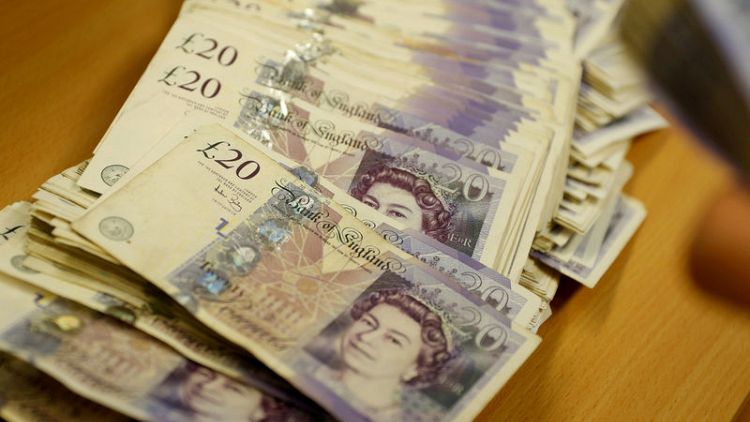By Ross Finley
LONDON (Reuters) - The pound is set to be stronger by the time Britain leaves the European Union, according to currency strategists polled by Reuters, but in a year it still won't have come close to recouping its losses since the shock 2016 Brexit vote.
Sterling is due to edge up more than 2 percent against the dollar in six months - just after the March 29, 2019 date when it is scheduled to leave - to around $1.33.
It is then set to climb to $1.37 six months later, according to the poll, taken Sept 28-Oct 3, before Prime Minister Theresa May's Conservative Party conference speech on Wednesday.
Forecast ranges in the survey were wide, particularly on the 12-month horizon. But just two out of 64 forecasters said the pound would trade higher than where it was before the shock result in the June 2016 referendum at around $1.50.
The 12-month consensus has fallen along with the pound since the April poll, which was the first time forecasts for where sterling will be after the official leaving date were collected. Nearly every strategist has downgraded their view since then.
That latest median 12-month view has the pound languishing about 9 percent below $1.50. More than two years ago, just before the referendum, respondents correctly predicted in the Reuters foreign exchange poll that sterling would fall by about that much immediately afterward.
So the view that Britain leaving the EU will result in a lasting, not temporary, devaluation appears to be holding. Trade and industry data show that depreciation has done relatively little to boost exports or make Britain more competitive in the meantime.
For there to be any recovery in the pound from the current rate, around $1.30, most foreign exchange analysts say there will need to be positive developments on the terms under which Britain will leave the world's largest trading bloc.
With the Bank of England set to keep interest rates on hold in the interim and mixed signals on economic performance, a steadily-widening gap between UK rates and the U.S. federal funds rate will also keep pressure on sterling.
Still, over 80 percent of strategists polled say sterling will be higher in a year than where it is trading now. Optimists say there's a lot of bad news - including talk of a "no-deal" Brexit - already priced in.
"Indeed, the negatives surrounding deadlock Brexit negotiations and the UK government's Chequers plan are largely priced into the currency," notes Viraj Patel, FX strategist at ING in London.
Chequers, Prime Minister Theresa May's exit proposal that proposes to stay in the EU's single market in goods but to diverge in services, is unpopular in her own party. European Council President Donald Tusk says it "will not work."
In order for the pound to recover significantly, there will also need to be decidedly more negative prospects for the U.S. dollar, which right now is standing tall as near-term prospects for the world's largest economy look better than its peers.
The last time sterling rallied in the period since the Brexit vote, which took it above $1.43 and left many commentators scratching their heads at the time, coincided with what turned out to be a passing weak period for the dollar.
"Political risks like Brexit and U.S. trade disputes should continue to favor the USD over the GBP for the next three months," note market strategists at UBS. "A GBP rebound over 12 months remains possible, however. We still expect a benign outcome for Brexit negotiations, but the risk of a cliff-edge Brexit remains significant."
There does not appear to be much confidence about how sterling will perform in the near-term either.
Asked to gauge the risk that the pound will set a new post-Brexit low against the dollar before the end of March 2019, respondents were evenly split. The lowest point reached so far was just above $1.20 in early 2017.
Against the euro, the outlook for the pound is once again very subdued, with narrow forecast ranges.
Prospects for a decline against the currency of Britain's main trading partner have recently been held in check as traders fretted over a stand-off between the Italian government and the European Commission over the size of Italy's budget deficit.
But the same Reuters poll found the euro is expected to be resilient in coming months. [EUR/POLL]
(Other stories from the global foreign exchange poll:)
(Writing by Ross Finley; Polling by Indradip Ghosh and Sarmista Sen in BENGALURU; Analysis by Vivek Mishra in BENGALURU; Editing by Hugh Lawson)



